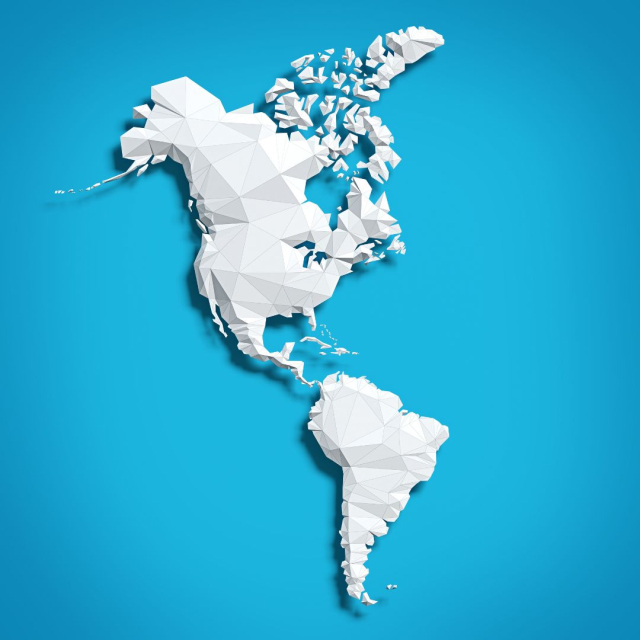April 14 marks the Day of the Americas , an occasion dedicated to commemorating unity, solidarity and cooperation among the countries of the American continent. This special day not only highlights the historical and cultural ties that unite the nations of the Americas, but also promotes the vision of a shared future based on peace, democracy and sustainable development.
Origin and Meaning of the Day of the Americas
The Day of the Americas has its origins in the First International Conference of American States, held in Washington, DC , in 1890. At this event, the participating countries agreed to create the Union of American Republics, an organization designed to foster cooperation and mutual understanding among the nations of the continent. This union later evolved into the current Organization of American States (OAS).
In 1931, during a meeting of the Pan American Union, April 14 was officially established as the Day of the Americas. This date symbolizes the aspiration of the American peoples to live in harmony, respecting their cultural differences and working together for the common good. The motto "For a united America" sums up the spirit of this celebration.
Fundamental Values of the Day of the Americas
The Day of the Americas is based on a series of fundamental values that guide relations between the countries of the continent:
Unity in Diversity: America is a continent rich in cultures, languages and traditions. From indigenous communities to African and European influences, diversity is one of the continent's greatest strengths.
Democracy and Human Rights: The promotion of democratic systems and respect for human rights are essential pillars for the development of American nations.
Cooperation and Sustainable Development: The countries of the Americas share common challenges, such as climate change, poverty and inequality. Regional cooperation is key to addressing these challenges effectively.
Peace and Solidarity: The Day of the Americas also seeks to foster an environment of peace and solidarity, promoting dialogue as a tool for resolving conflicts.
Celebrations in Different Countries
Across the continent, the Day of the Americas is celebrated in a variety of ways, reflecting the traditions and cultures of each region. Below, we highlight some of the ways countries commemorate this date:
USA
In the United States, Latino communities often organize cultural events that include music, traditional dances, and food fairs. These events seek to highlight the contribution of Latin American cultures to the social fabric of the country.
Mexico
In Mexico, the Day of the Americas is an occasion to reflect on the history and ties that unite the country with the rest of the continent. Schools often organize civic events, while universities hold conferences and seminars.
Central America
In countries such as Guatemala, El Salvador and Honduras, the celebration includes school parades, where students wear traditional costumes and perform artistic presentations that represent the culture of their countries.
South America
In countries such as Colombia, Peru and Argentina, the Day of the Americas is celebrated with cultural events and activities that promote regional integration. Embassies from different countries also organize meetings to strengthen diplomatic ties.
Caribbean
In the Caribbean, the Day of the Americas is an opportunity to highlight the region's cultural richness. Music festivals, art exhibitions and food fairs are common in countries such as the Dominican Republic and Jamaica.
Despite the progress made in integration and cooperation, the American continent faces a series of challenges that require urgent attention:
Economic Inequality: Wealth gaps between and within countries remain significant. Poverty and social exclusion are persistent problems affecting millions of people.
Climate Change: The continent is especially vulnerable to the effects of climate change, such as hurricanes, droughts and rising sea levels.
Migration: Political and economic crises in some regions have generated massive migration flows, posing challenges for both countries of origin and destination.
Human Rights: Although progress has been made, human rights violations still exist in various parts of the continent, especially against indigenous communities and other vulnerable groups.
Despite these challenges, the Day of the Americas also represents an opportunity to reflect on the ways in which countries can work together to build a more just and sustainable future. Cooperation in areas such as education, science and technology can make a significant difference.
The Organization of American States and its Role
The Organization of American States (OAS) plays a fundamental role in promoting the ideals of the Day of the Americas. With 35 member states, the OAS works in areas such as the defense of democracy, the promotion of human rights, integral development and multidimensional security.
Through programs and projects, the OAS seeks to foster cooperation among member countries and address common problems on the continent. Some of the OAS's notable achievements include mediation in political conflicts, support for democratic elections, and implementation of initiatives to combat corruption.
The Day of the Americas is much more than a symbolic celebration. It is a reminder that, despite differences, the countries of the continent share a common history and destiny. This day invites us to reflect on the values of unity, solidarity and cooperation, as well as to renew our commitment to building a more inclusive and prosperous America.
In an increasingly interconnected world, the spirit of the Day of the Americas takes on special relevance. The nations of the Americas have the opportunity to lead by example, showing that collaboration and mutual respect can overcome any obstacle. As we celebrate this day, let us remember that the true strength of the continent lies in its diversity and in the ability of its people to unite in pursuit of common goals.
